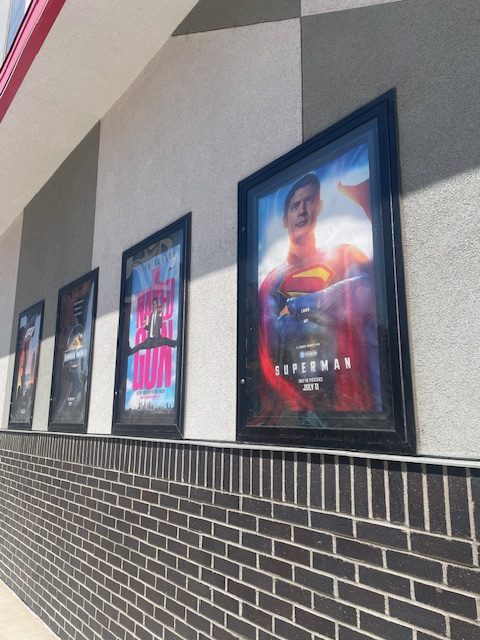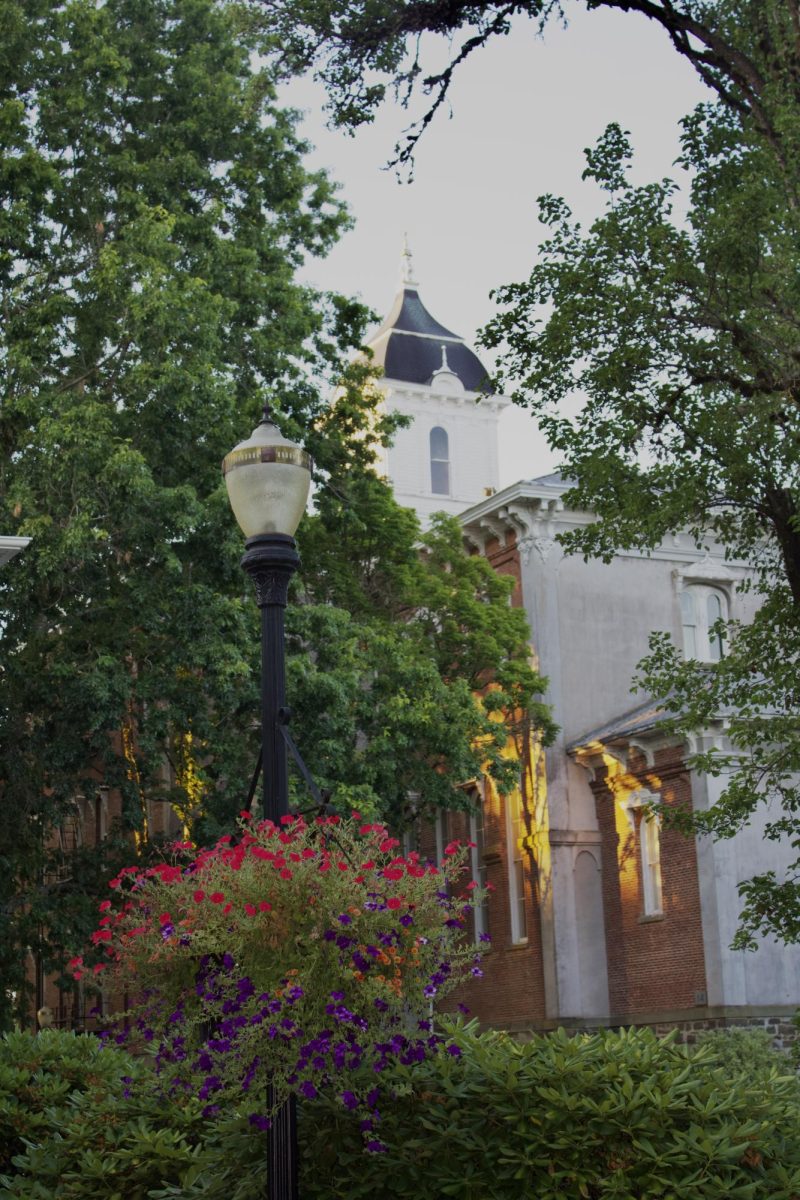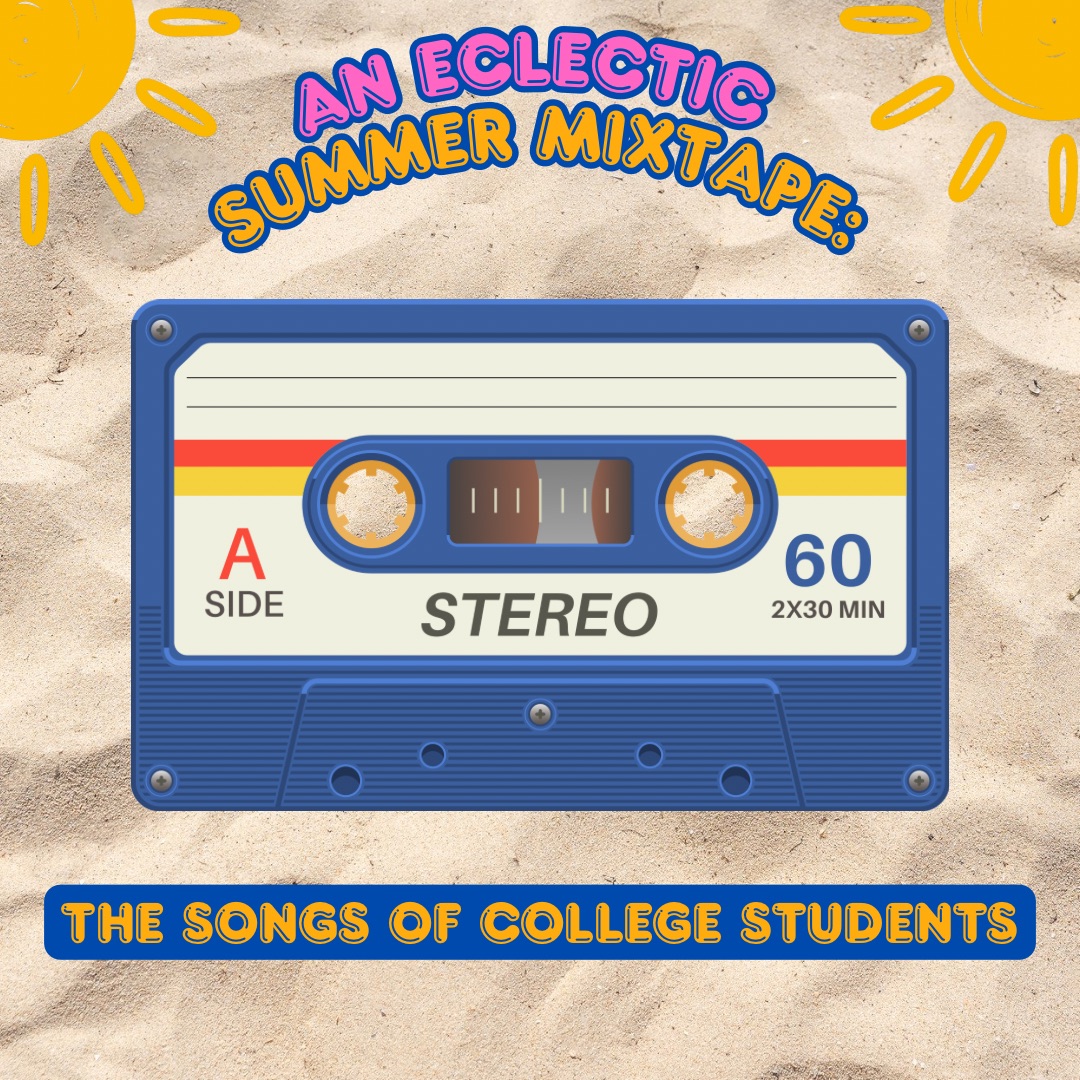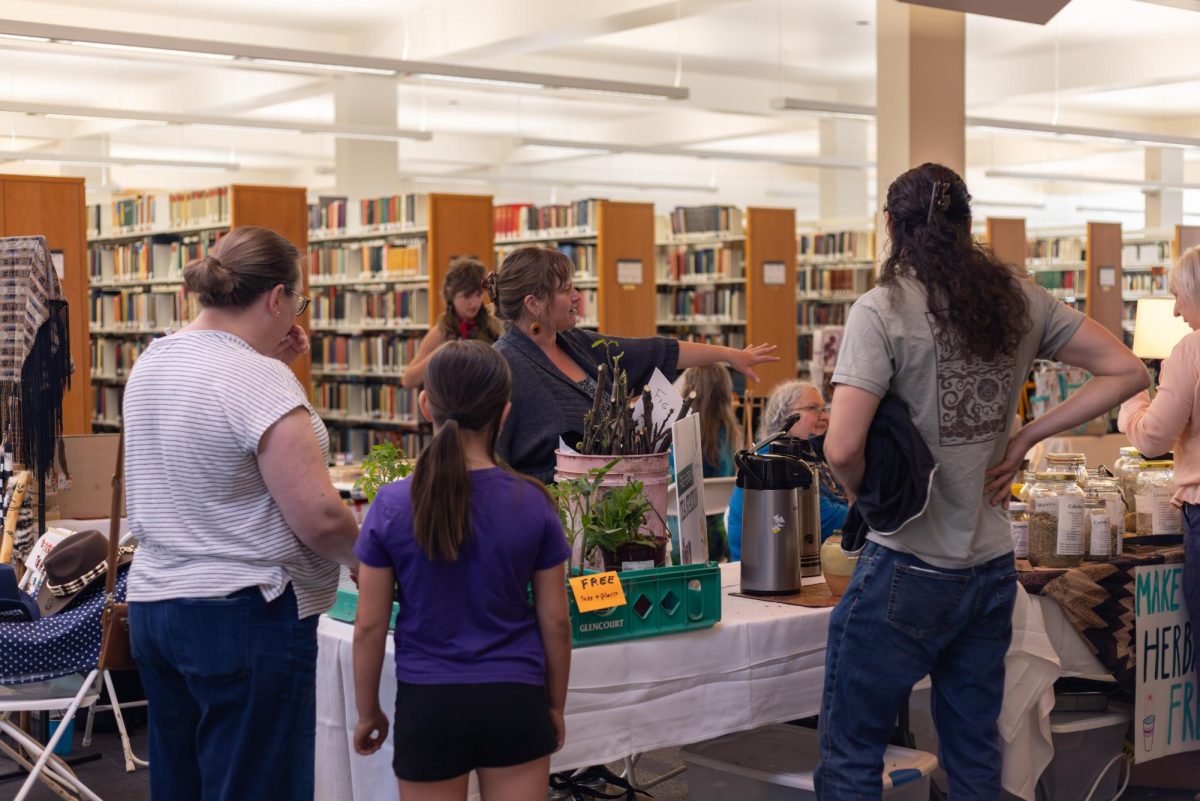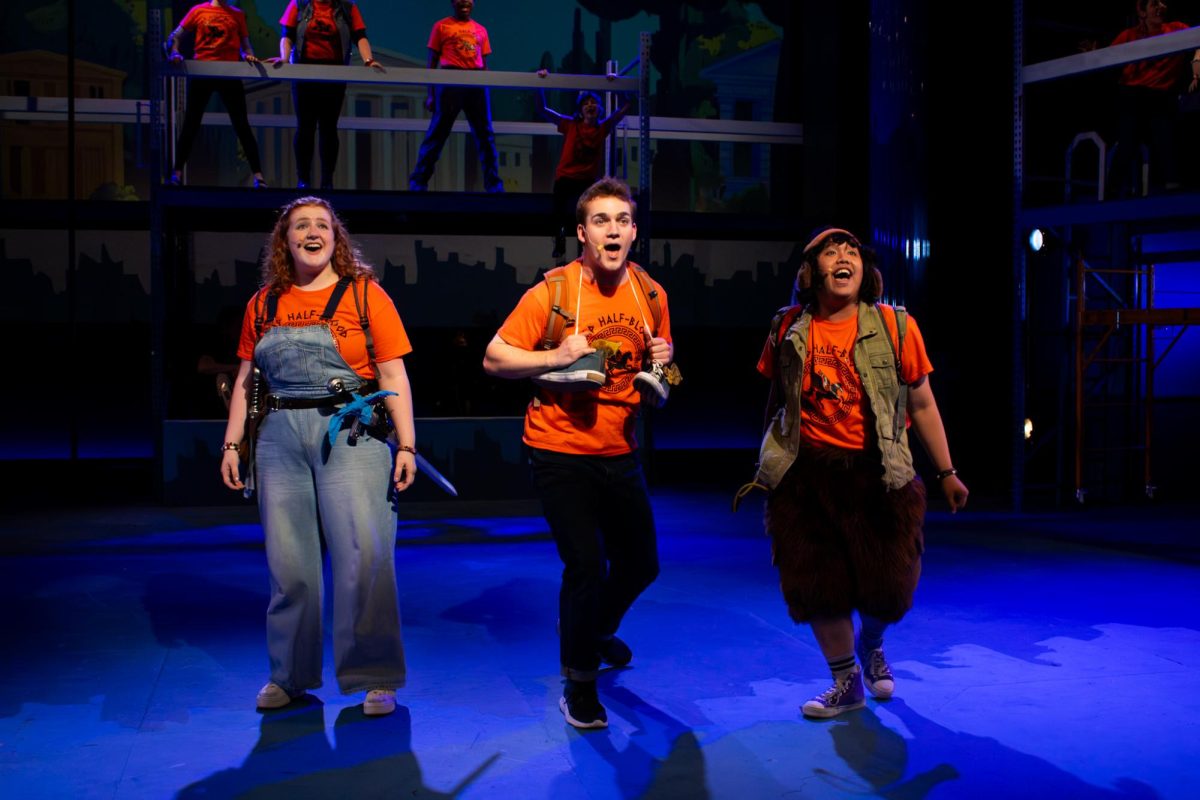Kelley Hungerford
A mess of intergalactic creatures, shapes and colors invades much of the workspace in the Miller Fine Arts building. Students bustle about the classroom, the wood shop and outside with neon paint, glue, stencils and brightly colored cloth.
Some are in plain clothes, and some are in masks; it is hard to tell human from alien.
This was a common scene this semester in Totem Shriver’s, adjunct professor of art and visual culture, Spatial Exploration class. The class worked together all term to create a float and individual costumes for McMinnville’s annual Alien Daze parade, which will take place at 1 p.m. May 16 on 3rd Street.
“I like the idea of doing a collaborative project because, 10 years down the line, when people are grown up and have babies, they’ll say, ‘I remember that art class. We made a float,’” Shriver said.
He said this project forces students to think about what is best for the overall class instead of what is best for their individual projects.
Having attended past Alien Daze parades, Shriver said he thought his art class could create a float superior to the ones typically entered in the event.
The wood sculpture project in his January Term Image Management class, he said, was a test run for this larger collaborative piece.
“They’re learning the same skills as in any other art class I teach, but more so,” Shriver said.
Shriver said he has never led a project such as this, and his students said they’ve never contributed to one.
“I’ve never been part of a project this big or this collaborative,” sophomore KayCee Hallstrom said. “It was really a test of people skills.”
Hallstrom said the biggest road block was the brainstorming process.
“The first [problem] was deciding on what to do, not even that, just the theme,” she said. “Group projects with five people are hard; think with 16.”
Another class member, junior Tasha Tolzmann, said the decision-making took so long because of a clash of egos: Everyone wanted their ideas heard.
“There are definitely a couple people in the class with strong personalities,” she said.
After two weeks of discussion, the class finally settled on a theme, 2009 Miss Universe, and sketched out ideas.
Hallstrom said that the difficulties in the brainstorming stage made building the float easier.
“I think the building would have been harder if we hadn’t had so much trouble with the theme,” she said. “Everything seemed easier after that. The mental is harder than the physical.”
Once the building began, the project started coming together.
“It’s cool to watch the whole project take place in front of me,” Shriver said. “It’s kind of a beast that has a life of its own.”
After shaping a lot of chicken wire and covering it with paper mache, which Tolzmann said was messy and stained her fingers yellow, the painting process began.
“We wanted it flashy, exciting and fun,” Hallstrom said.
She made moon shooting stars and other space-related stencils for the base of the float. The class used lots of bright neon, silver and gold paint, she said, to make everything seem more “spacey-like.”
“I liked the painting stage,” Tolzmann said. “When we got color on everything, it took on a completely different life.”
By mid-semester, Shriver said the class was pretty much functioning on its own.
“At midterm I said, ‘I should be able to take a backseat,’” he said. “I helped them with skills and things like that but tried to get them to make their own decisions.”
Tolzmann said the process smoothed out because when too many people were needed for the float, they could always create their alien costumes, which they will wear in the parade.
“At first I thought it was going to be kind of cheesy,” she said. “I was like, ‘Oh no, I have to be in a parade,’ but I’m actually really excited for it.”
Junior Cori Simmons, who is taking the class as a prerequisite for a photography class, said that not many of the students in the class have attended the parade before.
“A lot of us don’t know what to expect, so that should make it interesting,” she said.
Shriver said the element of the unknown causes a few more problems. Mainly, the class has been discussing how to transport the float to 3rd Street and what will happen if it rains.
“We can think about it and talk about it, but there’s still that surprise about what will happen on that day, and I think that’s what drives us,” he said.
That, and the fact that this art project will be shared with more than just Linfield students, helps to drive them.
“We’re not making art in a closet,” Shriver said. “We’re going to downtown 3rd Street in front of a million screaming fans, and we’re going to know exactly what they think about it.”
When the parade is over and the aliens fly back to their respective planets, and when the half hour of glory is done, Shriver said the class’s project will be to tear the float apart, throw away some pieces and save others for later use.
Although the float will be taken apart, the collaborative experience that the students have gained won’t fade.
“By the end of the term, they’re more of a small family,” Shriver said. “They end up reaching out to each other where they may not typically do so with individual projects.”
Hallstrom, who is majoring in art, said she has took more from this class than artistic skills.
“Since it was collaborative, I got to see how they viewed things, which helped me not so much as an artist, but as a person,” she said.
Shriver’s class is not the only class building a float. Adjunct Professor of Art and Visual Culture Cris Moss also has a class participating in the Alien Daze parade.
Moss did not respond to the Review’s attempts to contact him.
The floats have been kept top secret until the parade, so students must attend the parade to see the classes’ work.
“Everyone should come watch; it should be a good show,” Simmons said. “Bring your alien gear and get ready to have fun.”


